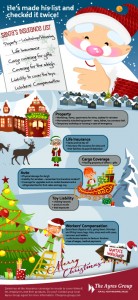A checklist for safe snowmobiling
Whether it’s to enjoy the thrill of the ride or the beauty of nature, to go places unreachable by other means or just to spend time with family and friends, millions of people enjoy the outdoors on snowmobiles.
The International Snowmobile Manufacturers Association (ISMA), representing the four North American snowmobile makers, reports 1.3 million registered snowmobiles in the United States. Snowmobile-related activities account for $26 billion in economic activity annually, including accessories, supplies, gasoline and tourism. While some use their machines for work, about 80 percent use them for leisure activities.
Snowmobiles are generally registered and regulated by individual states, and no central system compiles reports on snowmobile accidents, injuries or fatalities. Of those tracked by several states, most are the result of collisions with trees or other fixed objects with excessive speed or alcohol impairment as the most common contributing factors.
ISMA promotes safe snowmobiling through its Safe Rider program, and cites dozens of ways to protect yourself and those around you.
SAFETY TIPS
- Ensure your snowmobile is in proper mechanical operating condition before going on a ride. Check gas, oil, belt condition and carbides under the skis before each ride.
- Dress for the conditions! Layering clothing, including a windproof outer layer, is the best way to stay warm on cold days. Fingers and toes typically get cold first, so be sure to wear warm gloves (mitts with liners are best) and insulated boots.
- Wear a safety-certified helmet in the right size. You should have a clear face shield on the helmet or a pair of goggles to protect your eyes from the sun and wind.
- Avoid riding alone, especially at night. If you do, make sure you tell others the route you will be taking so they will know where to look if you are overdue.
- Stay on the marked route when riding trails on private property. Hidden objects, such as fences, tree stumps and stretched wire, may be concealed by snow.
- Slow down! Speed is a contributing factor in nearly all fatal snowmobiling accidents. Drivers should proceed at a pace that allows ample reaction time for any situation.
- Stay RIGHT when riding on trails, especially on corners or when cresting hills to avoid colliding with other snowmobiles coming from the opposite direction.
- Carry a first-aid kit. At a minimum, it should include a flashlight, knife, duct tape, compass, map, tow rope and waterproof matches.
- Carry a fully-charged cell phone; it can be a terrific asset if trouble arises, but keep in mind that cell phones have limited service range in remote areas.
- Use caution when crossing roads — come to a complete stop, make sure no traffic is approaching from either direction, then cross at a right angle to traffic.
- Don’t drink and ride! Drinking alcohol before snowmobiling or during your ride slows your reactions, impairs your judgment and is a leading contributor to snowmobiling deaths.
- Stay next to the markers if a trail crosses waterways. Ice conditions are never guaranteed, as rapidly changing weather and moving water affect the thickness and strength of ice.
This loss control information is advisory only. The author assumes no responsibility for management or control of loss control activities. Not all exposures are identified in this article. See your local Ayres Group Agent agent for insurance coverage and advice.
Courtesy: Cincinnati Insurance

